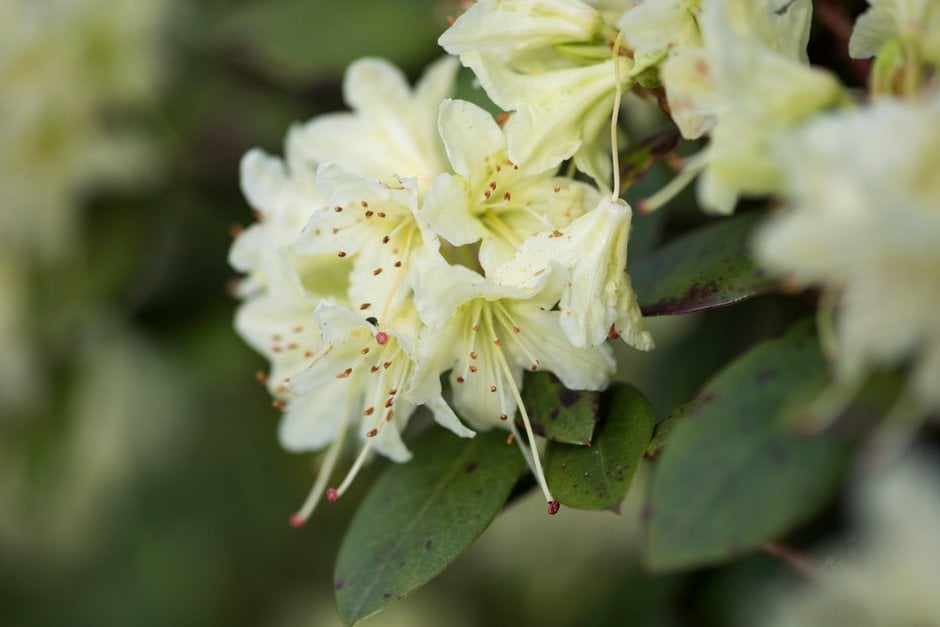Rhododendron 'Shamrock'
rhododendron 'Shamrock'
'Shamrock' is a compact, dwarf, spreading shrub up to 75cm high and wide with small evergreen leaves and many trusses of from five to nine funnel-shaped, pale yellow flowers, 0.7-2.5cm across, tinged green and spotted yellow inside, in early and mid-spring
Size
Ultimate height
0.5–1 metresTime to ultimate height
5–10 yearsUltimate spread
0.5–1 metresGrowing conditions
Moisture
Moist but well–drainedpH
AcidColour & scent
| Stem | Flower | Foliage | Fruit | |
| Spring | Yellow | Green | ||
|---|---|---|---|---|
| Summer | Green | |||
| Autumn | Green | |||
| Winter | Green |
Position
- Full sun
- Partial shade
Aspect
North–facing or South–facing or West–facing or East–facing
Exposure
Sheltered Hardiness
H6Botanical details
- Family
- Ericaceae
- Native to GB / Ireland
- No
- Foliage
- Evergreen
- Habit
- Spreading branched
- Potentially harmful
- Harmful if eaten. Wear gloves and other protective equipment when handling. Pets (dogs, cats, rabbits, tortoises) Harmful if eaten - for further information and contact numbers regarding pets, see the HTA guide to potentially harmful plants
- Genus
Rhododendron can be evergreen or deciduous shrubs or trees, with simple leaves, sometimes with a dense colourful indumentum of hairs on the lower side, and funnel-shaped, bell-shaped or tubular flowers that may be solitary or in short racemes
- Name status
Accepted
How to grow
Cultivation
Grow in light dappled shade, in a site sheltered from cold, dry winds and late frosts, in moist but well-drained, humus-rich, acidic soil, preferably between pH4.5 and pH5.5; will also tolerate sun and dry soil; for more advice, see rhododendron cultivation
Propagation
Propagate by heeled semi-ripe cuttings in late summer, by layering in autumn, or by grafting in late winter or late summer
Suggested planting locations and garden types
- City and courtyard gardens
- Cottage and informal garden
- Low Maintenance
- Banks and slopes
- Flower borders and beds
Pruning
Pruning group 1 (little or no pruning of trees and shrubs) or pruning group 8 (early-flowering evergreen shrubs)
Pests
May be susceptible to vine weevil, rhododendron and azalea whitefly, rhododendron leafhopper, pieris lacebug, scale insects, caterpillars and aphids
Diseases
May be susceptible to various Rhododendron diseases including powdery mildews, rhododendron petal blight, rhododendron bud blast, silver leaf and honey fungus
Get involved
The Royal Horticultural Society is the UK’s leading gardening charity. We aim to enrich everyone’s life through plants, and make the UK a greener and more beautiful place.

